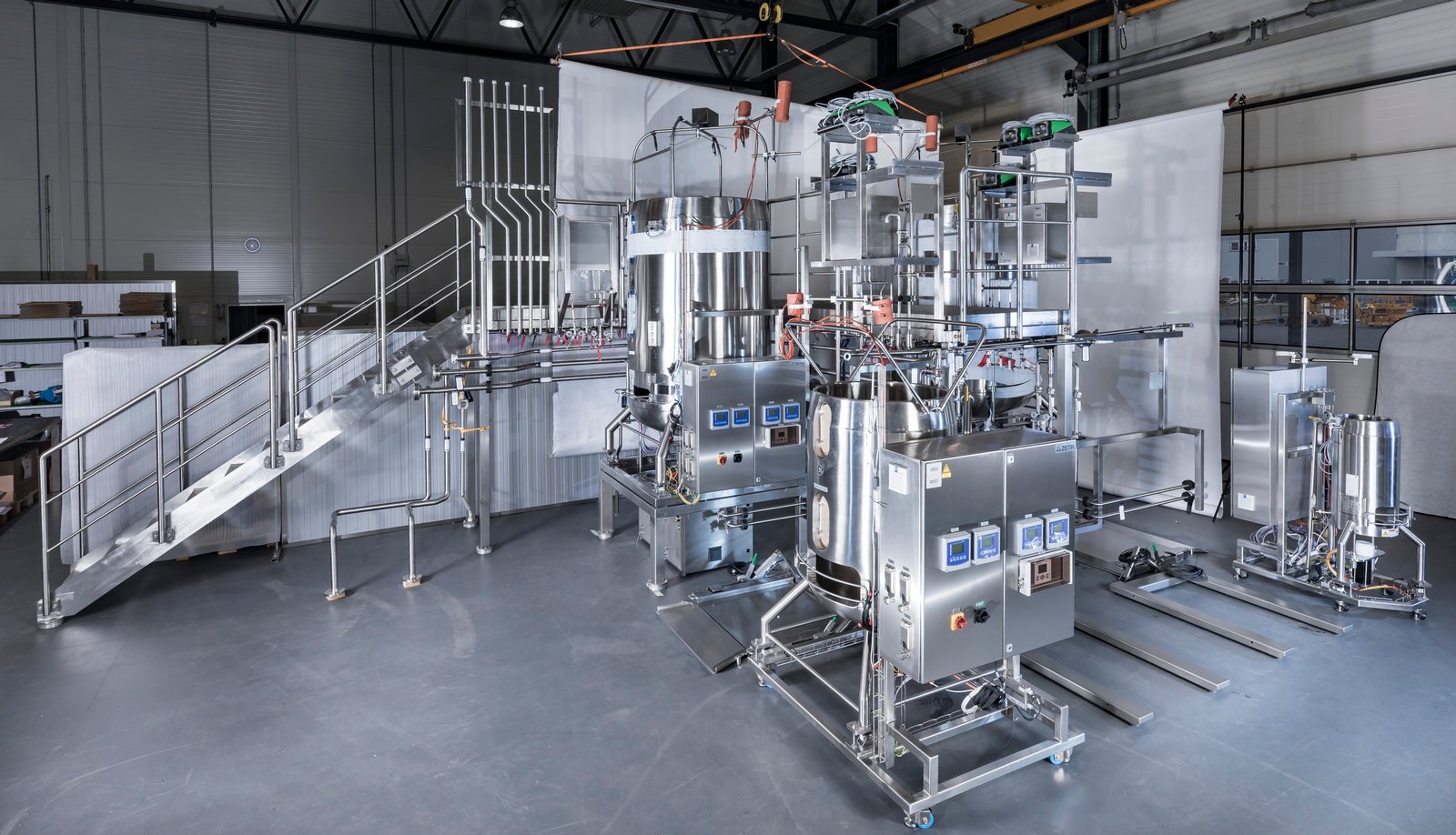
Hybrid Solution
The throwaway concept does not stop at plant engineering, and consequently the use of single-use equipment goes up. Single-use components are easier to handle and require no cleaning validation, which makes them less expensive. On the other hand there are stainless steel components that are significantly sturdier and allow for better process monitoring. But are the current process systems really in competition with one another? In a recently concluded fast-track project, ZETA demonstrated how the benefits of both systems come to bear in the form of a hybrid solution to the fullest satisfaction of a customer in the pharmaceutical industry
The single-use technology (SUT) is gaining importance in the planning of such fast-track projects. Single-use tools made from plastic are chemically or gamma-sterilised, making extensive and complex cleaning and sterilisation procedures obsolete. Furthermore they reduce the risk of product cross contaminations significantly. Their high flexibility means shorter set-up times, and changing from one product line to another is quick and smooth. Taking new production lines into operation within 12 months is certainly realistic thanks to SUT.
At the same time, single-use components are highly standardised which turns into a problem when plant operators require specific production solutions: Single-use bioreactors are only available in standard sizes of 50L, 200L, 500L, 1000L to 2000L, and the length and number of pipelines are also standardised. What is to be done when the production process calls for components that deviate from the standard? Any change in a standardised process obviously entails high costs. Risks need to be assessed and a number of qualification tests performed to ensure continued compliance with GMP specifications.
Other latent risks of SUT are leachables and extractables, i.e. chemical substances such as plastic additives, for example, or stabilisers or plasticisers that might migrate from the plastic under process conditions and impair product quality. The process-controlled production of active substances via suitable automation concepts and the lack of suitable sensors for process monitorings are other limits of SUT.
Hybrid solutions – a win-win system!
Hybrid solutions are state-of-the-art and stem from clever engineering concepts that combine SUT with traditional stainless steel components. Hybrid solutions draw on the benefits from both worlds: high flexibility and reduced set-up times provided by SUT meet sturdy stainless steel components that are better suited to withstand process conditions (e.g. high pressure, temperature, centrifugal forces, etc.) and also easy to automate. Process platforms that are equipped with stainless steel components for the production of media, separation or filling of biomass plus SUT for specific process steps have long been established in the industry. Merging the benefits of both technologies – SUT and stainless steel – improves process reliability and reproducibility. Some hybrid solutions are currently still in their infancy, and the compatibility of individual components requires of the closest attention to planning detail. Besides, the complexity of the qualification and validation documents differs enormously in scope and design between the various manufacturers, and still they need to be approved by the authorities. Early involvement of process and automation engineers and qualification experts in the planning phase has proven to be expedient for meeting all of these demands and requirements.
ZETA combines all this interdisciplinary expertise in its team and draws on many years of expert knowledge and experience in design, engineering, construction and automation of production plant.
Concrete example: Fast-track hybrid solution
ZETA successfully built a process platform where single-use bioreactor units (50L, 500L, 2 x 2000L) were integrated into an existing stainless steel plant. Special focus was placed on the automation and design of suitable measurement technology and temperature monitoring. By means of targeted software engineering the automation engineers succeeded in integrating the new tools in an existing PCS7 environment. The result: enormous flexibility for future production processes.
ZETA process engineers created the hybrid concept on the basis of sound and valid 3D plans; the concept ensures both access for safe operation plus simplified maintenance and no-fuss manual exchange of the single-use components. The space-saving design offers enough space for the temperature control unit (TCU) and makes the shortest possible pipe and line routes possible. The required process reliability and stability can be guaranteed by means of tailor-made routing for hoses and pipes that follows a coordinated pattern.
The fast-track project was implemented in a mere ten months! The significant improvement of the single-use application was achieved by tailored design of the plant based on targeted customer demands that called for the integration of sturdy and lasting stainless steel components. Another major benefit for the customer resulted from the flexible process control architecture on the basis of the PCS7 environment: the fast conversion to new production cycles and consequently shorter production cycles is making production processes for the future far easier – after all, time is money.




